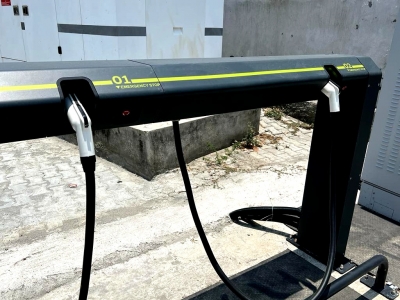Long way to go before public EV charging stations reach millions
By IANS | Published: May 14, 2023 09:57 AM2023-05-14T09:57:04+5:302023-05-14T10:10:54+5:30
New Delhi, May 14 India is making progress in building its electric vehicle (EV) charging infrastructure in order ...

Long way to go before public EV charging stations reach millions
New Delhi, May 14 India is making progress in building its electric vehicle (EV) charging infrastructure in order to phase out diesel vehicles in a stipulated time-frame but there is still a long way to go.
Currently, the ratio of EVs to charging stations is nearly 9:1, while the ideal ratio should be 4:1, meaning four cars per one charging point.
According to industry experts, most of the public charging stations are currently available in tier 1 cities and some highways.
"However, for mass EV adoption to occur, charging infrastructure must be accessible throughout the country to encourage people to choose EVs for long-distance travel," senior analyst Soumen Mandal from Counterpoint Research told .
India had 2,700 public charging stations and 5,500 charging connectors at the end of 2022.
The country is likely to have 10,000 public charging stations by the end of 2025.
"Furthermore, in order to achieve a 30 per cent EV adoption rate, India must build more than 300,000 public charging stations by 2030," Mandal said.
Leading EV ride-hailing and charging provider BluSmart Mobility has an all-electric ride-hailing fleet size of 3,500 EVs currently operating in Delhi-NCR and Bengaluru. It plans to have 10,000 EVs in FY24.
"The electrification of public transportation is imminent but the path to electrification has its own challenges. BluSmart tackles these challenges through an integrated and full-stack approach, optimally using and maintaining the EV ride-hailing fleet at scale," Anmol Singh Jaggi, Co-founder and CEO, BluSmart Mobility, said.
The government has been supporting the EV industry through schemes such as FAME1 and FAME2 with a major focus on charging infrastructure.
It has set a target to electrify 70 per cent of all commercial vehicles, 30 per cent of private cars, 40 per cent of buses, and 80 per cent of two-wheeler and three-wheeler sales by 2030.
According to JMK Research, in terms of the type of charging, "India's EV market currently has limited capabilities for fast-charging EVs".
In the Union Budget 2023-24, the Central government said that to further provide impetus to green mobility, customs duty exemption is being extended to the import of capital goods and machinery required for manufacture of lithium-ion cells for batteries used in electric vehicles a move hailed by the EV industry players.
Finance Minister Nirmala Sitharaman said that the subsidies on EV batteries will be extended for one more year, hence making EVs cheaper in the country.
In May 2021, the government unveiled the Production-Linked Incentive (PLI) scheme for manufacturing batteries.
As the EV adoption grows in India, the electric two-wheeler sales volume in the country is likely to reach 22 million by 2030.
According to the latest report by Redseer Strategy Consultants, the electric two-wheeler market is expected to be over 80 per cent of the overall two-wheeler market by 2030.
EV charging solution provider Statiq earlier this year had announced plans to install 20,000 EV charging stations across the country in FY23.
The company claims to have over 7,000 public semi-public and captive chargers in the country.
Disclaimer: This post has been auto-published from an agency feed without any modifications to the text and has not been reviewed by an editor
Open in app